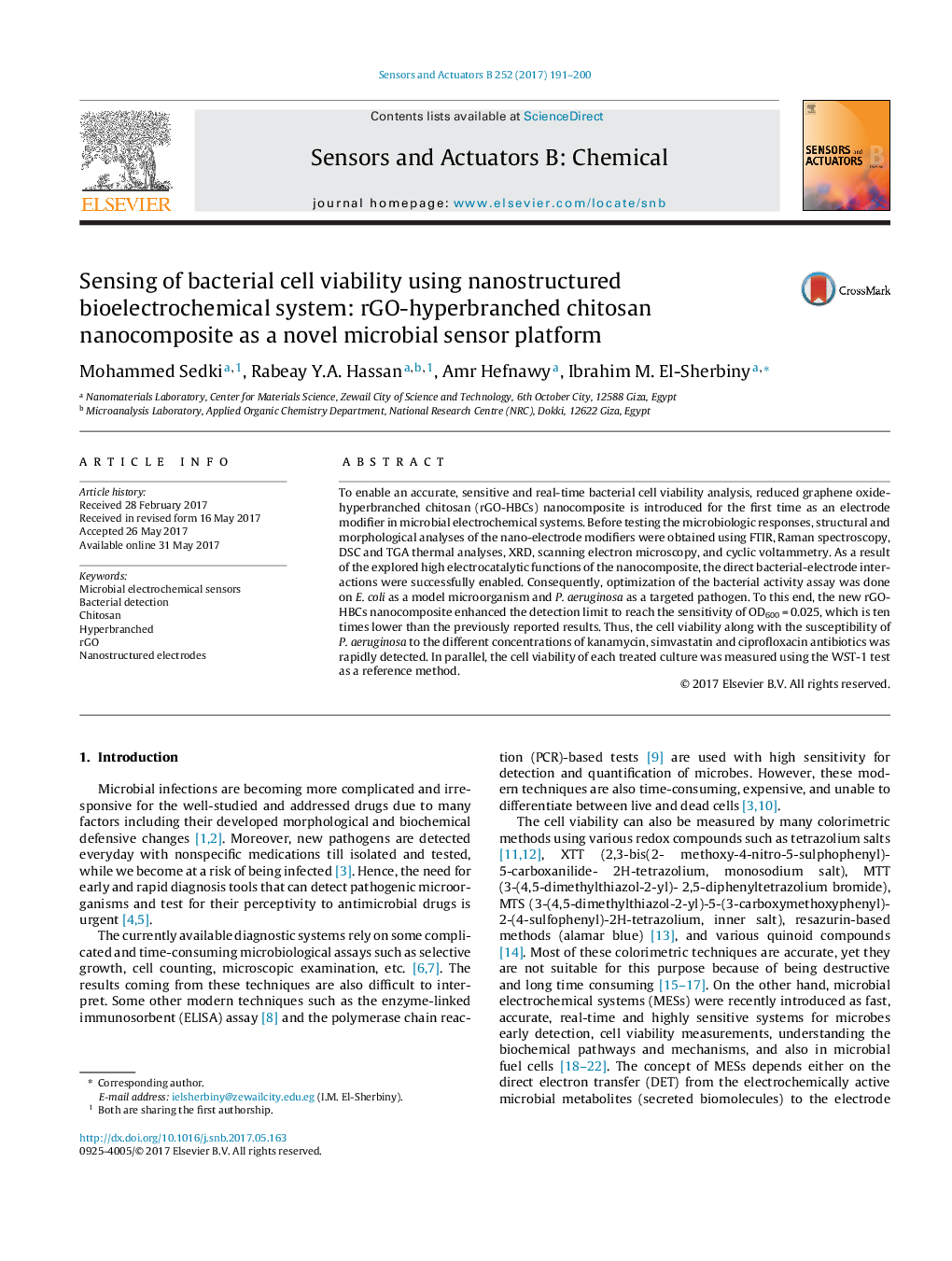| Article ID | Journal | Published Year | Pages | File Type |
|---|---|---|---|---|
| 5009066 | Sensors and Actuators B: Chemical | 2017 | 10 Pages |
â¢New reduced graphene oxide-hyperbranched chitosan (rGO-HBCs) was developed.â¢The new rGO-HBCs was used for the first time in microbial electrochemical systems.â¢The rGO-HBCs nanocomposites showed high electrocatalytic activity and conductivity.â¢Detection limit is ten times lower than the previously reported results.â¢The mechanism of the proposed bioassay has been identified.
To enable an accurate, sensitive and real-time bacterial cell viability analysis, reduced graphene oxide-hyperbranched chitosan (rGO-HBCs) nanocomposite is introduced for the first time as an electrode modifier in microbial electrochemical systems. Before testing the microbiologic responses, structural and morphological analyses of the nano-electrode modifiers were obtained using FTIR, Raman spectroscopy, DSC and TGA thermal analyses, XRD, scanning electron microscopy, and cyclic voltammetry. As a result of the explored high electrocatalytic functions of the nanocomposite, the direct bacterial-electrode interactions were successfully enabled. Consequently, optimization of the bacterial activity assay was done on E. coli as a model microorganism and P. aeruginosa as a targeted pathogen. To this end, the new rGO-HBCs nanocomposite enhanced the detection limit to reach the sensitivity of OD600Â =Â 0.025, which is ten times lower than the previously reported results. Thus, the cell viability along with the susceptibility of P. aeruginosa to the different concentrations of kanamycin, simvastatin and ciprofloxacin antibiotics was rapidly detected. In parallel, the cell viability of each treated culture was measured using the WST-1 test as a reference method.
Graphical abstractDownload high-res image (162KB)Download full-size image
